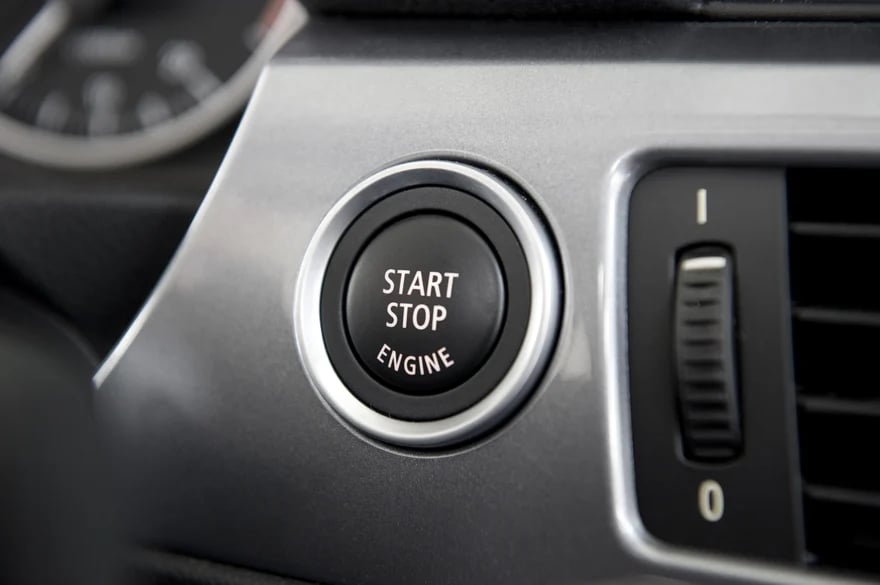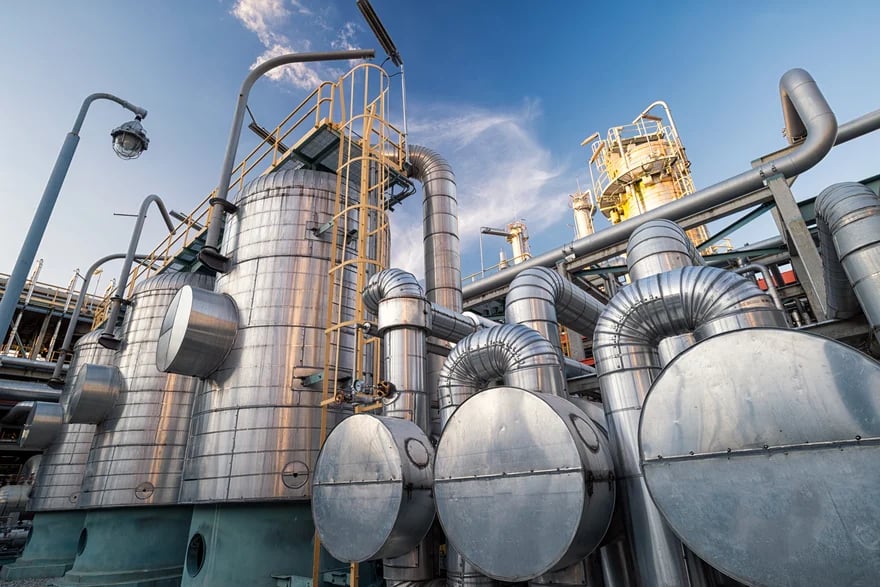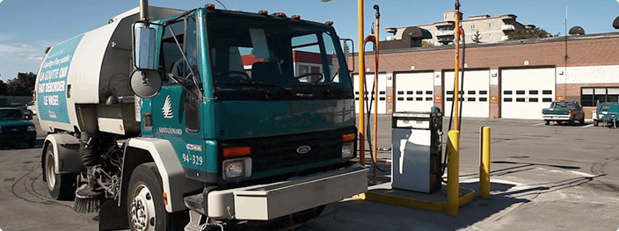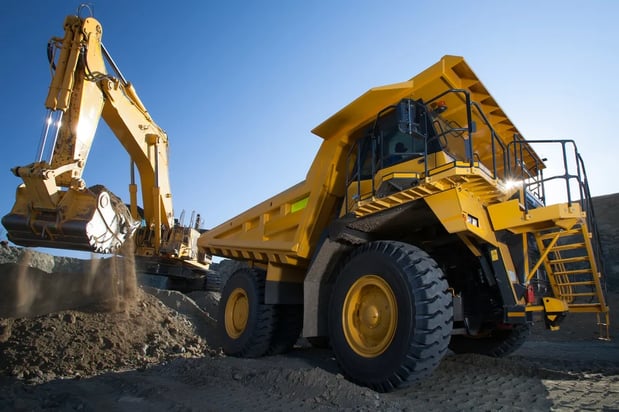A business-wise man once told me, "Fuel Management may not be the sexiest, but top fleet managers know it's where the money is."
Let’s get the obvious out of the way first: next to labor, fuel nearly always represents the highest cost of running a fleet. You need a fuel management system if you have your own fuel tanks and dispensers (AKA in-house fleet fueling). No ifs, ands, or buts about it. The level of sophistication and control required will vary from one industry to the next and even between companies within the same industry. But the need for minimal distribution and inventory control of fleet fuel is undeniable. Fuel is expensive, and maintaining inventories without knowing how much, to whom, when, and where it goes makes as much sense as having an open-bar bank account for all to dip into.
There are numerous benefits of deploying a fuel management system for your commercial fleet. But perhaps the most compelling argument is that it's an investment that quickly pays for itself—and then some. Plenty of real-world experience shows that you'll achieve savings of 10% or more on fleet fuel by implementing a reliable, competent, automated fuel management system (as compared to an “open bar”/honor system or "pen and paper" scenario). Some numbers can help illustrate the point.
Let’s take the example of a 50-vehicle commercial fleet. Suppose that each unit consumes an average of 100 liters (~ 26 gals) per week, a bit of a lowball estimate for commercial fleet vehicles but let's roll with it nonetheless. That still adds up to 260,000 L (~ 68,700 gals) a year, or about 980,000 USD worth of diesel fuel at average North American bulk prices. Each and every year. And we haven't yet factored in fuel fraud, leaks, and other kinds of fuel inventory "shrinkage." As mentioned previously, a well-designed fleet fuel management system can reduce consumption by at least 10%, saving your company 98,000 USD annually. That is nothing to sneeze at, and a commercial fleet of 50 vehicles remains a relatively small one.
basic features to look for in a capable fuel management system

The case for a fuel management system is pretty easy to make. So now what? There are several systems out there, and pretty much all of them cover the bare necessities when it comes to controlling a fuel pump’s distribution of that oh-so-precious fuel. In a nutshell, a system needs to:
- Track fuel distribution and inventory in real time.
- Offer the option to have users identify themselves.
- Require vehicles to be identified.
- You can capture primary vehicle data such as mileage and operating hours as part of the fueling sequence. This is important because any maintenance management system needs to be fed this data (among several others) to trigger vehicle recalls appropriately.
- Be able to manage any type of fluid (not just diesel and unleaded), but also propane, compressed natural gas (CNG) and other commercial fleet consumables.
- Restrict distribution to only products compatible with the vehicle being refuelled/serviced.
- Restrict volumes dispensed based on the vehicle's tank capacity.
- Offer centralized management of multiple sites via a web application, circumventing the need—and ongoing cost—of installing/maintaining application software on individual PC workstations.
- Have the ability to detect and record fuel deliveries automatically.
- Be able to capture and record tank levels in any managed product (automated tang level gauging).
- Use deliveries, tank levels, pump totalizer readings, and fuel distribution data to perform critical tasks such as producing inventory reconciliation reports, close periods, and assigning dollar values to fuel-related activities.
- Send notifications for important events, such as abnormal transactions, low fuel tank levels, and leaks.
In addition to the above, a critical aspect to consider is installation. You want to strike the right balance between cost, reliability (a wired installation requiring digging and trenching), and budgetary constraints (going RF or WiFi to save on installation costs).
You would no doubt agree the above-listed features and functions are the bare minimum you need for adequate fuel management. But features are only a means to an end: let’s now look at what is really in it for you as a commercial or industrial fleet manager.
Tangible Benefits of an automated fuel management system
Many products and services present themselves as investments, but this is one case where this view is especially true. Here are some benefits of an automated fuel management system.
Lower Fuel Consumption, tighter fuel inventory control
First and foremost, a sound fuel management system ensures that only authorized users, and active vehicles can access fuel. This goes a long way toward eliminating fraud. Secondly, with proper configuration, the maximum amount of fuel taken in a given transaction can be reduced to a volume that makes sense, such as the tank capacity of different vehicle classes. Finally, a good system enables you, as a fleet manager, to easily obtain accurate fuel reconciliation reports and period closures using delivery records, measured storage tank levels, totalizer readings, and fuel distribution data. This makes for tight fuel inventory management, thus making it easy for you to spot potential sources of loss quickly so that small problems don't become big headaches.
Reduced Labor costs
We're sure that everyone in your organization is squeaky clean and above any kind of petty fraud. But without an automated system, they still have to keep manual records of all fueling transactions. This involves employees taking precious time to write down details such as vehicle numbers, fuel amount, date, time, etc. Then, someone has to periodically key in this data into one or more of your information systems (accounting, ERP, preventive maintenance, et al.). Assuming your staff possesses this kind of discipline while maintaining the above-reproach strength of character mentioned earlier, we are still looking at significant labor spent recording and managing fuel-related data on an ongoing basis.
Also worth considering: if everything is recorded manually by, one would assume, humans, then there is the all too real possibility of data entry errors. Chasing down and correcting these errors (AKA "data scrubbing" or "data cleansing") is yet another layer of manual work that you neither desire nor can afford.
A fuel management system automatically manages your in-house fueling and records all transactional data. It also automatically generates the reports you need and sends them to the people who need them when they need them.
An Optimized Operation
A high-performance fuel management solution has built-in mechanisms to easily exchange data with third-party software such as maintenance management (CMMS), ERP, and accounting systems. Furthermore, it supports various data exchange protocols and formats, from web services to manual import/export of ASCII flat files, as not all systems are created equal. This helps avoid time wasted on double data entry and creates real synergy as data reaches pertinent systems promptly. For instance, when the fueling sequence includes entry/automatic capture of vehicle data (mileage, engine data, fault codes, etc.), necessary vehicle maintenance recalls are triggered at the right time, and costly breakdowns and interruptions are minimized.
Fuel tax recovery
This next item is relatively straightforward: some fleet equipment consumes fuel on and off-road, and chances are some kind of road tax is paid. A well-automated fuel management system can accurately track how much fuel was spent off-road in a given period, enabling you to recover as much fuel tax as legally possible.
Compliance with Environmental Regulations
Depending on the industry and jurisdictions in which you operate, several laws and regulations will dictate how tightly your fuel has to be tracked and managed. Regardless of industry, however, the government can knock on your door anytime if you have an underground tank. If that happens, you have to be able to produce reconciliation reports for any time period they specify. So whichever fuel management system you decide on, make sure it is capable, at the very least, to generate those reports quickly and reliably. Choose one that can do so automatically using a tank-level gauging system. Remember that soil decontamination is a highly costly process, making the detection of underground fuel leaks immensely valuable.
Beyond the basics: fuel management technology tailored to your specific industry
So far, we’ve gone over what a basic fleet fuel management system needs to be and what some of the benefits are. This is fine for some, and no additional investment or functionality is required. It is wise to know exactly what you need and stick to it—getting carried away with bells and whistles comes at a cost. That being said, many operate in industries with unique challenges and requirements. One-size-fits-all fuel management can prove less than optimal. It may therefore be quite important to look for a system that can adapt to your particular operational context. Here are some examples to illustrate the point.
Fuel management for the public Transit sector

Many fleet operators will want vehicles to be identified automatically at refuelling time for various reasons. Perhaps there is a problem with fraud. Or maybe employees are resistant to change or lack the motivation to collect accurate data, begetting a need to minimize human intervention. In any case, a sound fuel management system ought to be able to meet this requirement. It is, however, essential to proceed with caution.
In the case of public transit fleets, the most straightforward approach is also the most effective, efficient, and trouble-free. Whereas some would propose relatively intricate nozzle tag setups (battery-powered, AKA active tags being the worst), the best solution is actually a simple yet elegant one: RFID plates fastened on top of the bus, read by a long-range reader on the ceiling.
It boils down to common sense system design: buses within a given transit authority tend to be very similar and are always positioned the same way in the fueling bay when serviced. This predictable configuration makes it easy to correctly position long-range RFID readers and tags for consistently reliable reads. Also, because there can only be one bus at a time in a fueling lane—the identified bus—the system may immediately unlock all compatible products. This eliminates the need to request different consumables individually while enabling the system to record multiple products dispensed (fuel, engine oil, transmission fluid, et al.) in a single transaction.
Fuel management for Public Works departments
A public works operation may contain a rather sophisticated set of parts. For starters, whether directly or indirectly, it is funded by taxpayers. Because the funds will be used to purchase fuel, a high control and reporting capacity level is essential, as public scrutiny is part of the equation. And environmental issues linked to greenhouse gas emissions are increasingly a concern.
Furthermore, because cities often deal with unions, terminating or reprimanding staff who disagree with a change (such as introducing a new fuel management system) is not always an option. As a result, you may need a system that is as automated and "out of the way" as possible.
Fuel management in the Oil and Gas industry

Whether operating a refinery or a fuel depot, shipping fuel or providing services in the oil fields, the costs of fuel, labor, and maintenance are not only among the highest but more importantly, these activities are mission-critical and must be controlled precisely and with full accountability.
It had been a significant challenge for organizations in the oil and gas industry to manage their operations with technologies incapable of providing an automated, seamless, and integrated solution.
Although using technologies from multiple manufacturers is expected, this has hurt the oil and gas industry's bottom line. For example, controlling fuel distribution at the fuel depot with one supplier's technology and the entries and exits of fuel trucks with another's necessitates working with multiple vendors and learning multiple software, dealing with separate support teams, and so on. And the end result is a non-integrated, patchwork solution.
The same holds true for controlling remote tanks and generators in the oil fields, tracking the movement of fuel trucks and corporate assets, and managing all equipment maintenance and preventive maintenance.
The same holds true for managing remote tanks and generators in the oil fields, tracking the movement of fuel trucks and corporate assets, and managing the maintenance and preventive maintenance of all equipment. As in the public works sector, extensive, seamless integration is the key to achieving high operational efficiency and ROI.
Fuel management in the Mining industry
Aside from basic features and functions, every system deployed in the mining industry must meet two requirements: it must be rugged enough to withstand the often harsh climate and ensure that critical equipment never runs out of fuel.
Dust, sludge, water, ice, and snow are not suitable for the type of electronics used in fuel management systems. This means your chosen technology must have a proven track record of performing in harsh environments. Plus, users in the mining business are not always the gentlest when it comes to the equipment they use. For instance, don't be surprised if you see a mine employee using a fuel nozzle to break the ice on a vehicle!
Another important consideration is that mining companies frequently operate in remote areas. Diesel generators are routinely used to power everything from machines to climate control within facilities. In this context, tight management of fuel assets is vital and cannot be taken lightly. In addition to tracking fueling operations, a suitable fuel management system must monitor generator fuel levels, produce alarms and notifications in low-level conditions, and detect and flag leaks immediately.
Fuel management for Construction companies

Say you have one or more fleet fueling facilities and have found a suitable system to manage those fuel yards. You have captured and relayed transactional data in real-time and enjoy all the benefits of a well-designed fuel management system we've outlined so far.
But what if you also have several pickup truck-mounted transfer tanks (also known as slip tanks or saddle tanks) out in the field, refuelling equipment on job sites? X gallons per transfer tank multiplied by Y transfer tanks roaming around can add up to an unacceptably valuable amount of unaccounted liquid assets.
Not exactly ideal.
Managing small transfer tanks is a reasonably common challenge in the construction industry. As illustrated above, keeping track of that roaming fuel can be as daunting as it is crucial, especially the more of them you are responsible for. And due to their small size, equipping these transfer tanks with fuel tracking technology designed for larger tanker trucks is cost prohibitive. So when evaluating fuel management solutions for their fixed, in-house fueling, construction companies with mobile refuelling units should proceed with foresight. Looking for vendors who can also provide a cost-effective means of tracking mobile fuel distribution while still delivering the cost-cutting automation of more standard fixed systems is worth their while.
Automated Fuel management: a must-have for any fleet
In brief, a sound, automated fuel management system is a low-risk, high-reward investment that pays for itself quickly and then some. Remember the essential features we've covered here when shopping around for a solution for your fleet. Not only will you not go wrong, but chances are excellent that you'll go quite right.
Lower fuel consumption, easier environmental compliance, fuller fuel tax recovery, and more accurate inventory tracking are ways a competent fuel management system will increase operational efficiency and benefit your bottom line. And a little extra digging can uncover systems with features highly customized to the needs and workflows specific to your industry.
Please visit our home page and learn about some of the most advanced, industry-specific solutions available in fleet fuel management.


